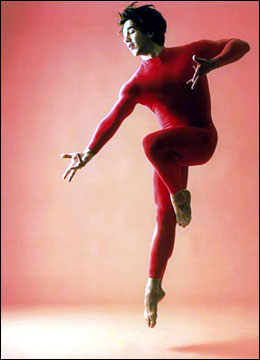DANCE--On the Move: Breath, water, and the "sensuality of movement"
<a href=www.richmond.com>Richmond.com Wednesday May 7, 2003
 It's a fallacy that "we need to be experts in order to enjoy something," says Juan Carlos Rincones, director of Rincones & Company Dance Theater. He deplores this all-too-common view, and says that the most rewarding thing for him is to connect with an audience, whether or not they are dance connoisseurs. "I feel that every audience member brings their own background, human story, and emotions of the moment" to bear on the interpretation of a performance, Rincones says, and he enjoys hearing comments from people who have seen elements in his work that he may never have intended.
It's a fallacy that "we need to be experts in order to enjoy something," says Juan Carlos Rincones, director of Rincones & Company Dance Theater. He deplores this all-too-common view, and says that the most rewarding thing for him is to connect with an audience, whether or not they are dance connoisseurs. "I feel that every audience member brings their own background, human story, and emotions of the moment" to bear on the interpretation of a performance, Rincones says, and he enjoys hearing comments from people who have seen elements in his work that he may never have intended.
Richmond audiences can draw their own conclusions from Rincones' work Thursday night at the Grace Street Theater, when the director and his company perform here for the first time. The program consists of new work, which Rincones refuses to discuss because he prefers "to have the audience see new pieces without any preconceived ideas," and in the second half, a repertory piece called "Torrentes."
Set to Samuel Barber's Piano Concerto, Op. 38, "Torrentes" reflects Rincones' "intense commitment to become intimately acquainted with the music." Music is a big component in his choreography, and while that may seem an obvious statement about a dancer, many choreographers work out movement first and find music later, or set work to no music at all. Not Rincones. "Music is my motivator," he says.
"I was very afraid of [the Barber music] at first because I couldn't count it." By approaching the music on his own terms, however, and understanding it as a dancer rather than as a musician, Rincones found he could make his own score through movement, and got past his fear of the concerto's intricacies.
Communicating this approach to his dancers, Rincones encourages them to feel the music through their breathing. Classical ballet, for example, downplays the movement of breath in the body, but Rincones likes to make that movement of breath part of the larger movement of the dance, and so "convey the music in a three-dimensional way." About "Torrentes" he says, "For me, the music evokes the forces of nature; in particular the rushing flow of water I associate with my native Venezuela."
Choreography for Rincones is a "quite uncomfortable" process that involves finding a quiet internal space to work out the progression from music to breath to movement. Once he's moving, he works in "wide brush strokes," sketching out loose movement phrases that he then begins to manipulate and define. Dance, he says, means "trying to communicate with the body," and he keeps this in mind throughout his process.
Working with his dancers, Rincones calls himself "a firm believer in the physicality of the process; it's a physical art." He works to elicit in them a "sensuality of movement" connected to the breath, and to the basic fact of human contact. Using the body as an expressive tool is an inherently sensual act, and Rincones revels in this fact. To enhance his dancers' expressive power, he spends time encouraging them to dig deep into their emotions and sensations, which helps them "to develop as artists, not just as dancers."
What can we expect from this week's concert? From explorations of the poetics of music, breath, and movement will surely emerge passion and excitement -- an excerpt from the endless human story. In Rincones' words, "Movement for me needs to express something human, a reminder of the connections that we have."